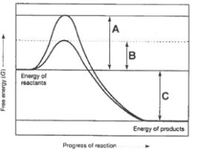
Unit 6 AP Bio
Quiz
•
Science
•
12th Grade
•
Hard
+2
Standards-aligned

Lisa Thompson
FREE Resource
25 questions
Show all answers
1.
MULTIPLE CHOICE QUESTION
1 min • 1 pt
What kind of chemical bond is found between paired bases of the DNA double helix?
hydrogen
ionic
covalent
2.
MULTIPLE CHOICE QUESTION
1 min • 1 pt
Which enzyme catalyzes the elongation of a DNA strand in the 5ʹ → 3ʹ direction?
primase
DNA ligase
DNA Polymerase
helicase
3.
MULTIPLE CHOICE QUESTION
1 min • 1 pt
What determines the nucleotide sequence of the newly synthesized strand during DNA replication?
the nucleotide sequence of the template strand
the primase used in the reaction
4.
MULTIPLE CHOICE QUESTION
1 min • 1 pt
You briefly expose bacteria undergoing DNA replication to radioactively labeled nucleotides. When you centrifuge the DNA isolated from the bacteria, the DNA separates into two classes. One class of labeled DNA includes very large molecules (thousands or even millions of nucleotides long), and the other includes short stretches of DNA (several hundred to a few thousand nucleotides in length). These two classes of DNA probably represent
leading strands and Okazaki fragments
lagging strands and Okazaki fragments.
5.
MULTIPLE CHOICE QUESTION
1 min • 1 pt
Compare and contrast the functions of the smooth and rough endoplasmic reticulum.
Both synthesize proteins; the rough ER also detoxifies chemicals.
The smooth ER synthesizes lipids; the rough ER synthesizes proteins.
Both store calcium ions; the smooth ER also synthesizes proteins.
The rough ER detoxifies chemicals; the smooth ER stores genetic material.
6.
MULTIPLE CHOICE QUESTION
1 min • 1 pt
What is the primary function of the mitochondria in eukaryotic cells?
Photosynthesis
Protein synthesis
Energy production
Lipid storage
Tags
NGSS.HS-LS1-7
7.
MULTIPLE CHOICE QUESTION
1 min • 1 pt
Which of the following best describes the function of the nucleolus within the nucleus?
It stores DNA.
It synthesizes ribosomal RNA.
It regulates cell division.
It modifies proteins.
Create a free account and access millions of resources
Similar Resources on Wayground

25 questions
Transcription Translation Basics
Quiz
•
9th Grade - University

23 questions
Bio Unit 4 Topic 1 - C
Quiz
•
12th Grade

25 questions
07-03 DNA Replication
Quiz
•
9th - 12th Grade

21 questions
DNA Structure & Replication
Quiz
•
11th - 12th Grade

26 questions
Protein Synthesis Quiz
Quiz
•
12th Grade

25 questions
DNA Replication Amoeba Sisters
Quiz
•
9th Grade - University

23 questions
DNA Replication & Cell Cycle
Quiz
•
9th - 12th Grade

25 questions
AP Bio Unit 6 Gene Expression
Quiz
•
12th Grade - University
Popular Resources on Wayground

10 questions
Video Games
Quiz
•
6th - 12th Grade

10 questions
Lab Safety Procedures and Guidelines
Interactive video
•
6th - 10th Grade

25 questions
Multiplication Facts
Quiz
•
5th Grade

10 questions
UPDATED FOREST Kindness 9-22
Lesson
•
9th - 12th Grade

22 questions
Adding Integers
Quiz
•
6th Grade

15 questions
Subtracting Integers
Quiz
•
7th Grade

20 questions
US Constitution Quiz
Quiz
•
11th Grade

10 questions
Exploring Digital Citizenship Essentials
Interactive video
•
6th - 10th Grade
Discover more resources for Science

10 questions
Exploring the Four Types of Human Body Tissue
Interactive video
•
9th - 12th Grade

90 questions
Unit 1 (Ch 2 & 3) Test Review - Water/Ocean Currents
Quiz
•
9th - 12th Grade

20 questions
Water as a Resource
Quiz
•
10th - 12th Grade

30 questions
States of Matter and Phase Changes
Passage
•
9th - 12th Grade

6 questions
Integumentary system
Lesson
•
12th Grade

106 questions
Env Unit 1 Test Review
Quiz
•
12th Grade

17 questions
Unit 3A: Cells Vocab
Quiz
•
9th - 12th Grade

25 questions
Biomolecules Review
Quiz
•
9th - 12th Grade
